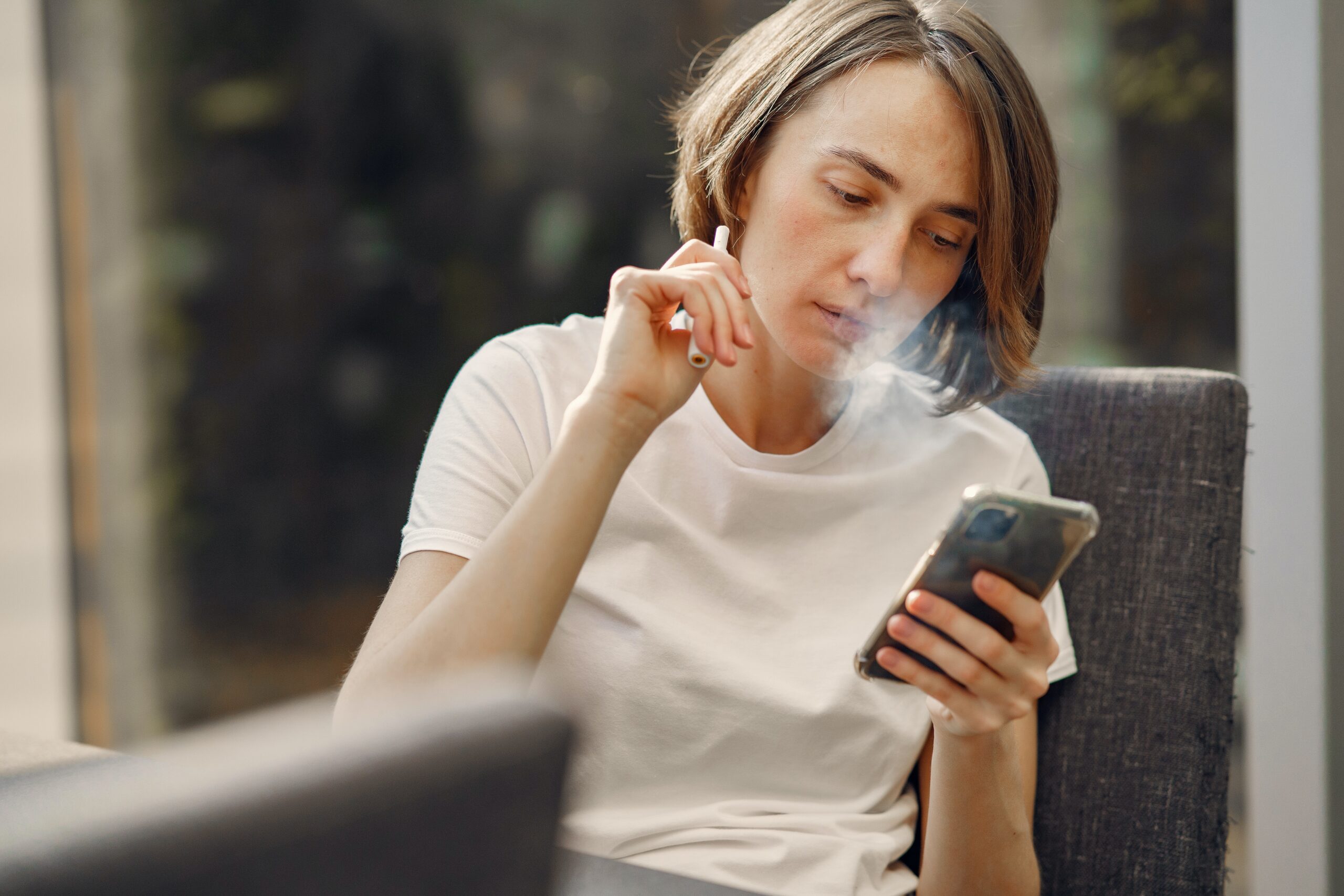
The Journey quitting Juul was a little back and forth. I had been sober for ten years. Recovery from a substance use disorder is a huge part of what motivated me to make a difference in the healthcare industry. My struggles with addiction and consequent sobriety are fundamental to my personal narrative and identity. The problem is that once you get attached to a narrative, you become very resistant to any new information which threatens it. This is probably why it recently took me months to realize I had developed another addiction.
Last year I started vaping. I have never been a smoker, but I asked to try a friend’s JuuL to see what the fuss was about and I liked it. It feels good, the product itself is sleek and attractive, and you can do it wherever and whenever you want.
More importantly, there don’t seem to be many health risks. JuuL pods contain nicotine, like cigarettes, but no tobacco and no tar. Nicotine is addictive but isn’t considered dangerous except for teenagers, or unless you have pre-existing heart conditions.
I enjoy JUULing quite a lot. A puff wakes me up in the morning and a JuuL break during the day is relaxing. If it’s not damaging my health, there’s no problem, right? I hardly even questioned it until I came across an article in the New York Times.
The article discusses the fact that many teenagers are becoming addicted to JuuL. Because few people think about it as an addiction, there are no clear paths to recovery for these teens.
You can argue all day about whether JuuL addiction among teens is a problem in and of itself, or the lesser of two evils, considering it gives teens an edgy outlet for their angst without the devastating health risks of cigarettes. However, the article struck a note for me, as I suddenly realized I had become addicted to JuuLing.
Defining Addiction
We need to take a step back before discussing this further. The question you are surely asking is, if the health risks truly are minimal, is a JuuL addiction even deserving of the name? It’s a habit, but just because you feel compelled to do something does not make it an addiction.
So, I want to quickly clarify what an addiction is, before I explain why I consider JuuLing an addiction.
An addiction is something you feel compelled to do, whether due to a physical craving, a psychological urge, or both. Of course, these two things are not mutually exclusive. Addictions often start due to a lack of alternative psychological coping methods which then leads you to become physically dependent on the substance. Alternatively, an addiction that began as an entirely physical dependence on a substance can become a psychological coping method. It takes the place of healthy mechanisms that existed before the addiction.
JuuL is an addiction for the simple reason that it compels you to use it again and again and again. Nicotine is so addictive that after using a JuuL for a few days, you begin to feel withdrawals if you don’t do it regularly. It is also an addiction because you can use it as an alternative to healthy coping mechanisms. Instead of regulating emotions in a positive way, you puff on a JuuL and feel some sort of relief.
Like most addictions, one leads to the other. If you start using a JuuL to relieve difficult emotions, you will soon become physically addicted to it. If you become dependent on it for purely physical reasons, it soon becomes an emotional crutch.
For me, I started using a JuuL because of the physical pleasure it gave me. I consequently found some emotional benefits, including the fact that it relaxes me, gets me going in the morning, and gives me some relief when a problem is stressing me out.
After reading the NYT article, I began to contemplate how I had started using my JuuL and I suddenly felt like I’d gone insane for the past few months. I can’t ride the subway for forty minutes without jonesing for a puff. I can’t make it through and entire dinner without ducking out to vape. If I don’t JuuL for half an hour, I get a splitting headache.
How had this not raised any of my red flags? Even if I my personal recovery began over ten years ago, I work with people struggling from substance use disorders every single day.
But that is how addictions work. Cognitive dissonance is addiction’s best friend. It refers to the ability to believe one thing while doing the opposite.
It did give me an idea, though. I am only beginning my journey quitting JuuL. This is an opportunity for me to go through the process with deliberation and awareness. I aim to document it, tracking the 5 stages of change everyone goes through during recovery from an addiction.
Of course, I don’t feel the same urgency as I would with more dangerous addictions which is why I can approach it so blithely. However, the 5 stages apply.
In my next post, I’ll outline the 5 stages of change in recovery, and where I stand right now.
About Adam Banks
Adam Banks is a certified interventionist and the owner of Adam Banks Recovery. After receiving an MBA from the University of Chicago, Adam built a company that was later acquired by United Health Care. His discipline and attention to detail comes from his former career as an airline pilot, holding an ATP, the FAA’s highest license.
Today, Adam is dedicated to helping others achieve long-term sobriety. His work has guided executives, pilots, and physicians on paths to recovery. Adam brings families together through a loving and inclusive approach.
Adam has authored four books on addiction. His recent work, Navigating Recovery Ground School: 12 Lessons to Help Families Navigate Recovery, educates families on the entire intervention process. He also offers a free video course for families considering an intervention for a loved one.
Adam is available for alcohol and drug intervention services in New York, Long Island, the Hamptons as well as nationally and internationally.




